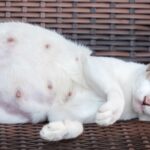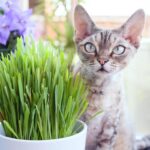The roseicollis lovebirds are a variety of lovebirds, also called lovebirds or lovebirds, which are also known as peach-faced lovebirds, in reference to the pink color of their head feathers. This particular species, the roseicollis lovebird, comes from South Africa, from the area closest to the Namibian desert. Therefore we are faced with some birds that are used to living in a hot environment. This is not to say that peach-faced lovebirds cannot be bred in other areas of the world. Today they are raised from birth in virtually all environments and can live anywhere in the world as long as they are indoors. If you want to raise these birds outside you have to make sure that they will never be subjected to temperatures below five degrees and that they have some shelter, such as a nest, where they can warm up during the coldest hours of the day.

Roseicollis lovebirds usually have a size of about fifteen centimeters and, usually, do not weigh more than fifty grams. We are facing the most common variety of lovebirds and it is a very popular pet. The popularity of this bird surely responds to the beautiful color of its feathers since it is a very fertile species, unlike other varieties of lovebirds, such as the aquaporin’s personate. The most common is that they have green feathers on all their bodies except for the head, whose feathers are pink. This is the most common plumage, although the frequent crossings between other varieties have made it possible for them to present more varied tones today. If you want to know more about what roseicollis lovebirds are like…keep reading!
What do you need for roseicollis lovebirds?
- Apaporis roseicollis
- Cage
Roseicollis Lovebird Instructions
- Males and females are practically the same, so there is no sexual dimorphism in the species; although some breeders point out that the heads of females are slightly larger.
- It is a very sociable and playful species but, during the breeding season, it can respond very aggressively to the presence of other species in the area.
- Their diet is based, especially, on seeds and pipes. Of course your diet should be expanded with calcium, fruits and cereals.
- In freedom it is a species that occupies a lot of space and likes to move freely. For this reason, when breeding them in captivity, it is advisable to acquire the largest cage that remains in the space that we can grant them.
- Lovebirds, in general, are a species that enjoy the company of their congeners. A lovebird reared alone is usually a sad and melancholy bird. Finding a partner is something important since the best way to raise these animals is as a couple, for a reason they are known as love birds or inseparable.
- Roseicollis lovebirds love to perform two activities in particular: bathing very often and gnawing on wood. For this reason, it is convenient to set up specific areas for this in their cages.
- They are very sociable and outgoing animals, something that makes them perfect pets. Females tend to be less sociable with people, at least for the first few days and until they get used to their presence.
- They have a very nice song although they can emit high-pitched and very loud screeches that can become somewhat annoying. As with the rest of the varieties of their species, the roseicollis lovebirds can imitate sounds, but it is very rare that they manage to imitate that of the human voice. There have been cases of lovebirds that have “managed to speak” but these are very isolated cases, nothing to do with parrots.
Tips for roseicollis lovebirds
- If you are thinking of having a lovebird before acquiring it, we advise you to read this article on how to care for a lovebird
- If you have decided that your agonies roseicollis will reproduce and you have allowed them to build a nest, it is a good idea that once they have raised their young, does not remove it. The agonies roseicollis usually sleep inside it since it constitutes a perfect refuge for them in which they can be somewhat warmer.
- A metal cage will always be much more suitable than a wooden one, both in terms of resistance and hygiene.















